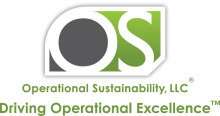60th Annual Loss Prevention Symposium (LPS)
The Loss Prevention Symposium (LPS) is one of several parallel symposia that comprise the Global Congress on Process Safety (GCPS). The purpose of the LPS conference is to present technological advances in process safety, explosion prevention, fire protection, and lessons learned from incident investigations. LPS focuses on process safety technology – new developments, cutting-edge solutions, and innovative/novel approaches to hazard identification and risk assessment/management.
Conference registration will be open soon!
Encouraged Topics for this conference include, but not limited to:
- To Breathe or Not to Breathe? That's the Wrong Question for Toxic Modeling!
- Battery Safety in the Chemical Industry
- Runaway Reactions
- Fires, Explosions, and Chemical Reactivity
- Energy Safety
- The Technology of Process Safety
- Emergency Planning and Response
- Modeling for Risk Quantification
- Combustible Dusts: Avoiding Disasters
- Facility Siting, Consequence Analysis, and Risk Assessment
- Engineered Safety Systems and Mitigation Technologies
- The Art of Learning from Incidents, from Sherlock Holmes to Trevor Kletz
- Case Histories
LPS Chair & Vice Chair:
-
Jessica M. Morris, PhD, PMP, CFEI | Manager, Software Development | BakerRisk, and Rima Lahiri, Global Process Safety Leader, Chemours Company, at LPS_chair@aiche.org
Session Topic Descriptions:
To Breathe or Not to Breathe? That's the Wrong Question for Toxic Modeling!
The Loss Prevention Symposium is seeking abstract submissions for our upcoming session on toxic risk management. This session will delve into the latest advances and developments in risk assessment, mitigation, and emergency response planning for toxic materials. We encourage abstracts that cover case studies on real or potential toxic hazards, their toxicological assessments, and impact on human and environmental health.
Share your research findings, innovative ideas, and best practices with colleagues and peers about risk associated with toxic materials, threshold values, dose versus concentration, and the use of probits to assess toxicity. We welcome submissions from industry, academia, or government agencies. The abstracts should clearly convey the problem or situation, emphasize best practices, and suggest future research directions. Join us for this important discussion on advancing process safety.
Battery Safety in the Chemical Industry
Rechargeable batteries have become an essential - and growing - power source in industry. Rechargeable batteries, including lithium and nickel chemistries, are used to energize tools, equipment, and communication devices. Larger format batteries are used for vehicle power, and battery energy storage systems (BESS) offer large format power storage. Each of these chemistries and scale of operation poses new hazards related to battery failures, electrical supply and charging hazards, and reliable power supply on demand. This session seeks papers related to identifying and managing the risks of batteries, such as:
- Modes of battery system failure
- Hazards of battery failure (e.g. thermal runaway, toxic gases, fires, and explosion)
- Consequences of battery failure within chemical manufacturing facilities and recycling facilities
- Hazard identification and risk assessment techniques used to assess battery systems
- Engineering design to mitigate risk
- Emergency planning and response
Investigating thermal hazards is critical for safe process design and operation.
Runaway reactions are a major source of industrial accidents which can occur in a wide array of manufacturing sectors, including chemicals, petrochemical, food and agricultural, plastics, and rubber manufacturing.
This session invites papers that explore runaway reactions, including:
(1) mechanisms behind runaway reactions, exploring factors such as heat generation, non-condensable gas generation, reactant concentration, and reaction kinetics
(2) computational methods, including dynamic simulation and kinetic modeling, to enhance safety in chemical processes where runaway reaction scenarios exist
(2) various techniques for assessing and quantifying thermal risks, including adiabatic calorimetry, differential scanning calorimetry, and reaction calorimetry
(3) preventive measures, mitigations, and emergency response strategies.
Fires, Explosions, and Chemical Reactivity
Preventing and mitigating fires, explosions, and chemical reactivity hazards has long been a crucial focus for the loss prevention community. This session aims to address the challenges and latest advancements in managing risks associated with these hazards. Topics of interest include but are not limited to:
• Prevention and protection measures
• Hazard assessment and risk management
• Understanding the underlying potential hazardous event causes and mechanisms
• Best practices for designing and operating equipment
• Case studies and lessons learned from incidents
We invite submissions from researchers, practitioners, and industry experts to share their knowledge and experience in these areas. Presentations can be focused on theoretical or applied research, innovative technologies, case studies, or practical solutions to prevent or mitigate these hazards.
As the global energy landscape shifts towards more sustainable solutions, ensuring energy safety is paramount. This session focuses on advancing the engineering and technologies associated with low-carbon and no-carbon energy sources. We seek significant contributions that delve into the safety aspects of hydrogen, LNG, ammonia, and other emerging energy carriers. Papers addressing large-scale field testing, innovative safety measures, consequence modeling, and mitigation strategies in the production, storage, transportation, and utilization of these energy forms are particularly welcome. We hope this session will showcase the most recent research results in energy safety, contributing to a safer and more sustainable energy future.
Liquid fuels, gaseous fuels, liquefied gaseous fuels, and electricity have historically served as the primary energy sources for society. This session aims to present new developments in safety technology or understanding of the hazards posed by the traditional energy infrastructure. Topics may include technical aspects of infrastructure safety such as trucking and rail transportation; fueling, loading, and unloading stations; transmission and distribution pipelines; and electrical power generation and distribution.
The Technology of Process Safety
his session aims to explore innovations, advancements, and learnings related to engineered process safety technologies. Topics may relate to the development and application of new technologies to the process industry as well as the implementation of engineered safeguards that are appropriately designed, installed, operated, and maintained to prevent/mitigate events as well as threat assessments to digital and automated controls, current and future industry standards, ongoing research, industrial case studies, and approaches to building cyber-resiliency into processing operations. We invite speakers to share original contributions, case studies, best practices, and lessons learned on topics related to the technology of process safety, including:
• New Innovations: Cutting-edge technologies such as AI, machine learning, and robotics in predicting and preventing safety incidents, optimizing safety protocols, and enhancing decision-making processes.
• Mechanical Pressure Relief Systems: Innovations in design, testing, and implementation of pressure relief systems to prevent overpressure scenarios. o Instrumented Protection Systems: Development, application, and key learnings related to Safety Instrumented Systems (SIS), Basic Process Control Systems (BPCS), and other instrumented safeguards.
• Automated Detection and Response Systems: Advances in automation technologies for real-time detection and response to safety incidents, including release detection and emergency shutdown systems.
• Passive Mitigation Technologies: Design and implementation of passive safety measures such as blast walls, fire protection, and drainage/containment systems that do not require active intervention to function.
• Cybersecurity threat assessments to digital and automated controls, current and future industry standards, ongoing research, industrial case studies, and approaches to building cyber-resiliency into processing operations.
Emergency Planning and Response
Emergencies can include everything from process safety events (such as fire, explosions, toxic releases etc.), extreme weather events (such as floods, earthquakes), and third-party events (such as sabotage, neighboring facility impacts). Most Emergency Response Plans are based upon a “credible” scenario, but as some of these “incredible” events occur, they become “credible”. Are your plans updated? Emergency response planning starts well before an emergency occurs as some plans may involve prediction, consequence modeling, and mitigation of consequences through inherently safer design considerations, layers of protection, internal and external communications, mustering, evacuation routes, and provisions as well as ways stakeholder engagement in response planning. Topics of interest may include any of those mentioned here.
Modeling for Risk Quantification
The objective of this session is to raise awareness of opportunities to improve hazard identification, consequence prediction, and risk mitigation through the application of existing and emerging modeling techniques. This session will serve as a venue for process safety engineers and modelers to discuss available tools, their capabilities, and application examples as well as to identify problems that would benefit from new model development and application.
Submissions are welcome in areas including but not limited to steady-state and dynamic process modeling, kinetics and reactor modeling, dispersion analysis, computational fluid dynamics (CFD), finite element analysis (FEA), and data analytics. In this session, we are also calling for submissions involving real world situations wherein gaps in technical quality have or could have led to process safety incidents highlighting key lessons learned and opportunity for the wider industry to incorporate or be aware of these pitfalls. Application areas include manufacturing, transport, power generation and storage, and resource extraction and span both production/field and research.
Combustible Dusts: Avoiding Disasters
The analysis, prevention, protection, and mitigation of fires, flash fires, and explosions remains critical to the loss prevention community and combustible dust safety continues to be an area of interest and development for loss prevention professionals. This session explores fires, flash fires, and explosions caused by combustible dust, which manifests as a hazard across diverse industrial sectors.
This technical session invites papers on these process hazards as they relate to the chemical industry, with a specific focus on new data, novel or cutting-edge approaches related to hazards identification and/or characterization, updated regulatory matters, hazards assessment, and the development of safe designs and/or operational practices to manage the hazards.
Facility Siting, Consequence Analysis, and Risk Assessment
Consequence modeling, quantitative risk assessment techniques, and facility siting analyses are vital tools utilized by process safety professionals for understanding and managing risk. These methodologies find applications in various areas such as capital projects, on-shore and off-shore facilities, pipelines, transportation, and emergency response.
This session aims to explore recent advances and innovative approaches in facility siting, consequence analysis, and quantitative risk analysis. Additionally, we are interested in the integration and practical application of these tools and techniques at the corporate level to manage risks across the enterprise. We welcome papers that discuss best practices, share case studies, highlight valuable lessons learned in the field, and in general contribute to the overall understanding of effective risk management.
Engineered Safety Systems and Mitigation Technologies
Engineered systems are implemented to maintain safe operations and prevent adverse outcomes. Engineered safety systems and other mitigation technologies are diverse in their nature and function and may include mechanical pressure relief systems, instrumented protection systems, automated response systems, and passive mitigation such as drain systems and fire protection. There are two critical aspects of managing engineered safeguards: 1. Establishing safeguards that are appropriately designed, installed, and operated to prevent or mitigate events, and 2. Ensuring the continued reliability of these safeguards. This session invites speakers to share their knowledge on safeguard design and management, new safety system technologies, best practices, case studies, and lessons learned.
The Art of Learning from Incidents, from Sherlock Holmes to Trevor Kletz
You're invited to submit an abstract for a session dedicated to advancing incident investigation practices in the chemical and petrochemical industries. We welcome contributions that explore innovative techniques and systems designed to transform incident insights into actionable improvements. Topics of interest include the application of forensic approaches to root cause analysis, integration of emerging technologies for preserving evidence integrity, and strategies that enhance organizational learning from near misses and major events. Submissions that demonstrate how digital tools, data analytics, or cross-functional collaboration can elevate the effectiveness of investigations are especially encouraged.
GCPS Joint Session: Case Histories
Reviews of process safety incidents provide valuable learning opportunities. This session invites papers to help understand the causes and lessons learned from incidents in the industry with an emphasis on events that have helped define and develop the process safety field over the years.





